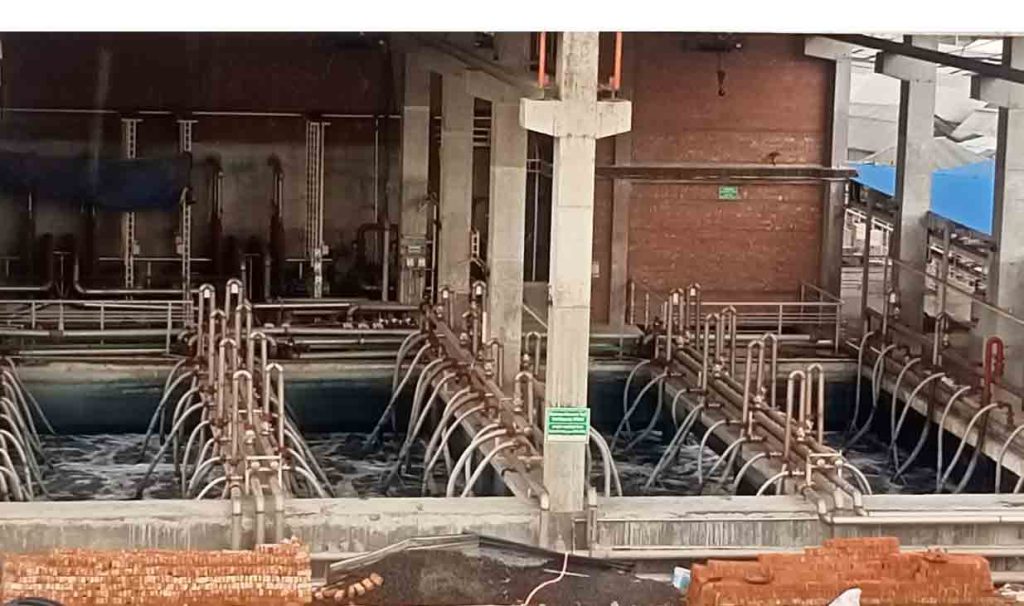Revolution Sewage treatment plant in Bangladesh in 2024
For a nation like Bangladesh, with its rich cultural heritage, vibrant delta landscape, and burgeoning population, clean water is more than just a necessity – it’s the lifeblood of the country. But ensuring a sustainable water supply goes hand-in-hand with effectively managing wastewater. Here’s where sewage treatment plants (STPs) step onto the stage, playing a crucial role in safeguarding public health and the environment.

Bangladesh’s Sewage Treatment Initiatives
The past decade has witnessed a significant shift in Bangladesh’s approach to water treatment. The country is actively embracing innovative solutions to tackle the challenges of rapid urbanization and its impact on sanitation infrastructure. This commitment is evident in several key initiatives:
- The Rise of the Dasherkandi Giant: In 2019, Bangladesh unveiled the Dasherkandi Sewage Treatment Plant (STP), a behemoth in the region. This state-of-the-art facility, built by the Dhaka Wasa (DWASA), boasts a treatment capacity of a whopping 500 million liters of sewage per day. This translates to serving the sanitation needs of nearly five million people in Dhaka city, significantly reducing the strain on surrounding rivers.
- Beyond Dhaka: A Nationwide Effort: The Dasherkandi plant serves as a beacon, inspiring a nationwide push for improved sewage treatment. DWASA has a masterplan in place to construct four more STPs strategically located across Dhaka, aiming to treat 100% of the city’s sewage by 2030. Similar initiatives are underway in other major cities like Chittagong and Barisal, demonstrating a national commitment to clean water.
Wastewater Treatment Technologies in Bangladesh
The success of sewage treatment hinges on the technology employed. Here’s a glimpse into some of the key players in Bangladesh’s wastewater treatment arsenal:
- MBR (Membrane Bioreactor): This cutting-edge technology utilizes membranes to efficiently separate treated wastewater from solids and contaminants. The Chittagong City Corporation STP exemplifies the successful application of MBR, treating a daily volume of 100 million liters.
- SBR (Sequencing Batch Reactor): A cost-effective and versatile option, SBR systems are well-suited for smaller communities and decentralized treatment plants. The Barisal City Corporation STP leverages SBR technology to treat 25 million liters of wastewater daily, showcasing its effectiveness in resource-constrained settings.
A Sustainable Sanitation Future
Clean water isn’t just about treating sewage; it’s about creating a sustainable sanitation ecosystem. Here’s how Bangladesh is approaching this holistic vision:
- SDG 6: A Guiding Light: Bangladesh is a signatory to the UN’s Sustainable Development Goal (SDG) 6, which emphasizes access to clean water and sanitation for all. This commitment acts as a roadmap, guiding policy decisions and resource allocation towards achieving universal sanitation access.
- Water Pollution Reduction: Effective sewage treatment directly translates to cleaner rivers and waterways. By treating wastewater before discharge, Bangladesh is actively working to reduce water pollution, safeguarding the health of its aquatic ecosystems and the communities that depend on them.
Overcoming Hurdles in Sewage Treatment
Despite the progress, Bangladesh faces some hurdles in its sewage treatment journey:
- Rapid Urbanization: As cities continue to expand, the demand for efficient sewage treatment increases exponentially. Upgrading and expanding existing infrastructure to keep pace with this rapid growth is an ongoing challenge.
- Funding Constraints: Building and maintaining modern STPs requires significant financial resources. Attracting private sector investment and securing international aid are crucial to bridge the funding gap and ensure the continued development of the sanitation sector.
A Brighter Future for Sewage Treatment
The future of sewage treatment in Bangladesh is brimming with promise. Here’s what lies ahead:
- Expansion Plans: Building upon the success of the Dasherkandi plant, future plans involve constructing more STPs across the country, ensuring wider coverage and improved accessibility.
- Embracing Innovation: New technologies like advanced filtration systems and resource recovery from treated wastewater are being explored to enhance efficiency and sustainability.
Price List
- Varied Sizes and Technologies: STPs come in all shapes and sizes, catering to communities ranging from a few hundred people to entire megacities. The cost scales significantly based on capacity. A small, decentralized plant for a rural village will obviously cost much less than a behemoth like the Dasherkandi STP.
- Technology Selection: Different wastewater treatment technologies (MBR, SBR, etc.) have varying costs associated with equipment, installation, and maintenance.
- Land Acquisition and Construction: The cost of acquiring land for the plant and construction expenses can vary depending on location and materials used.
However, to give you a general idea, here’s a breakdown:
- Small-scale plants (serving a few hundred people): These can range from 50 लाख taka (5 million taka) to 1 কোটি taka (10 million taka).
- Medium-scale plants (serving a few thousand people): The price range can fall between 5 কোটি taka (50 million taka) to 20 কোটি taka (200 million taka).
A Collective Responsibility
The journey towards clean water for all in Bangladesh requires a collective effort. From government initiatives to private sector investment and public awareness campaigns, every step forward counts. By embracing innovation, overcoming challenges, and working together, Bangladesh is well on its way to achieving a cleaner, more sustainable future for its citizens and its environment.
